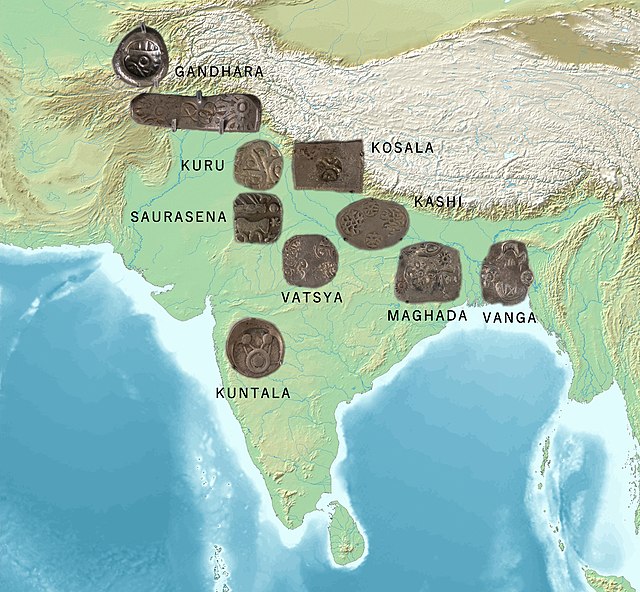Punch-marked coins, also known as Aahat coins, are a type of early coinage of India, dating to between about the 6th and 2nd centuries BC. It was of irregular shape. These coins are found over most parts of subcontinent and remained in circulation till the early centuries CE.
A hoard of mostly Mauryan punch-marked coins
Punch-marked coins discovered from Chandraketugarh.
Athens coin (c. 500/490-485 BC) discovered in Pushkalavati. This coin is the earliest known example of its type to be found so far east.
"Bent bar" minted under Achaemenid administration, Gandhara, c.350 BC.
The Coinage of India began anywhere between early 1st millennium BCE to the 6th century BCE, and consisted mainly of copper and silver coins in its initial stage. The coins of this period were Karshapanas or Pana. A variety of earliest Indian coins, however, unlike those circulated in West Asia, were stamped bars of metal, suggesting that the innovation of stamped currency was added to a pre-existing form of token currency which had already been present in the Janapadas and Mahajanapada kingdoms of the Early historic India. The kingdoms that minted their own coins included Gandhara, Kuntala, Kuru, Magadha, Panchala, Shakya, Surasena, Surashtra and Vidarbha etc.
Hoard of mostly Maurya Empire coins
Silver Tanka and Rupee coins from different sultanates and princely states of India
"The First South Asian coins", 400–300 BCE, British Museum. According to the British Museum, the first coins in South Asia were issued in Afghanistan c. 400 BCE, and then spread to the sub-subcontinent.
Punch-marked coin minted in the Kabul Valley under the Achaemenid administration. c. 500–380 BC, or c. 350 BCE.







